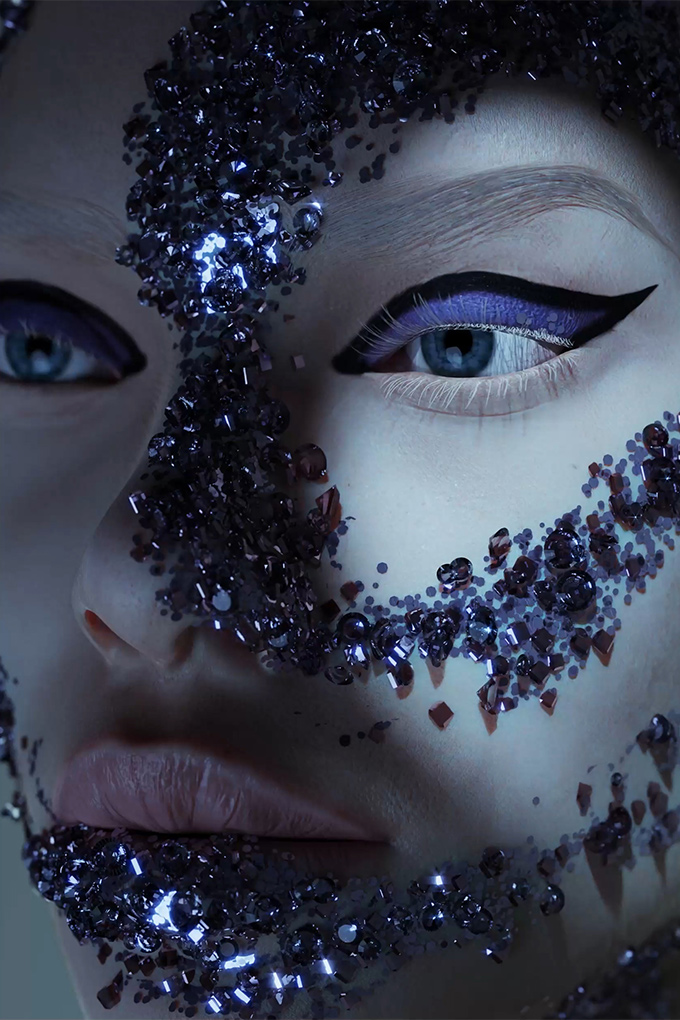When actor Idris Elba purchased his first non-fungible tokens (NFTs) in January this year, they came from local artist Shavonne Wong’s emotive first NFT collection. Wong had pivoted over to 3D art during the pandemic with the intention of catering to commercial clients, before discovering the world of NFTs. Once an award-winning fashion photographer, today, she stands as one of Singapore’s most prominent NFT artists and the co-founder of NFT Asia, an inclusive community that uplifts Asian and Asia-based creatives.
Wong believes that NFTs bring about a greater acceptance of digital art within the art industry. “The art world has always seemed closed off. As an artist, you have to make the right connections, learn industry jargon and so on,” Wong shares. “As a commercial creative, I never really saw myself as an artist. But venturing into the NFT space has given me the creative freedom to do what I want—and to become an artist in my own right.”
She elaborates, “Illustrators and graphic designers don’t necessarily get to display their work in museums and art galleries. The NFT universe allows these forms of digital art to be taken seriously.”

Beyond lending digital creatives a platform to share their work, the NFT space is open to a global audience—meaning artists need not limit themselves to the parameters of their local clientele. As per Wong, the chance to present one’s work internationally, while not a guarantee of success, is one that is greatly treasured. “In the analogue art world, you need to know the right people to ever get an opportunity to share your work with global collectors. The barrier of entry with NFTs is significantly lower,” she explains.
That said, the meteoric rise in the popularity of NFTs also comes with a platitude of concerns and misconceptions. The related environmental issues immediately spring to Wong’s mind. While she acknowledges the legitimacy of these problems, she also highlights the vast improvements that have been made. Ethereum, the world’s second-largest cryptocurrency, recently made the switch to using a proof-of-stake model, a move that could cut the blockchain’s energy requirements by up to 99.9 percent.
“The NFT universe allows different forms of digital art to be taken seriously.”
There is also the crucial issue of people stealing digital artwork and selling them as NFTs. To this, Wong points out that art has, unfortunately, been stolen for years—regardless of platform or medium. She suggests: “There are a few ways through which digital artists can protect their art from theft, such as by putting a watermark on their work or only uploading it in a lower resolution. As for NFT buyers and collectors, doing your research and talking to the artists about their work can help ensure the pieces you purchase are authentic.”
As with most pursuits, Wong believes a combination of hard work and luck is necessary to succeed in the NFT space as an artist. “It’s not just your art you have to work on—how you portray yourself is also important. Unlike in physical galleries, as an NFT artist, you don’t have anyone to help you finetune your pricing or your artist biography.”

It is therefore hard to overstate the importance of finding likeminded peers, especially for artists who are just getting stepping foot into the scene. “The NFT community is full of mutual support,” Wong shares. The First Mint Fund, for example, was set up to help Southeast Asian artists mint their first NFT if they could not afford to on their own—especially during the early parts of last year when the costs of minting were high.
“In this space, there is a lot of self-doubt and questioning. Having people that you can talk to helps.” The journey to becoming an NFT artist may be fraught with the uncertainty to be expected on new roads, but a welcoming community willing to help certainly makes the journey smoother. “Once you have a community you believe in, you can look out for each other and learn from one another. When new artists enter the space, you pay it forward by inviting them to join the group,” Wong concludes.





